| Revista Umělec 2006/2 >> Lucerne’s Chapel Bridge | Lista de todas las ediciones | ||||||||||||
|
|||||||||||||
Lucerne’s Chapel BridgeRevista Umělec 2006/201.02.2006 Marion Ronca | u-sobě | en cs |
|||||||||||||
|
On the Construction and Reconstruction of a Landmark
I cannot remember precisely when and on which occasion I first set foot onto Europe’s oldest and probably longest covered wooden bridge—the Lucerne chapel bridge. What I do recall very clearly though is feeling uneasy in the face of such history and heritage which was for one evoked by the numerous cobwebs as well as the historic-genealogical lectures my grandfather used to give me. It was just then that I came to understand that the bridge was not only the longest covered bridge in Europe, but also one of the very few wooden bridges in the world that have a cycle of paintings underneath the gable. This cycle was tailor-painted for this very bridge in the early 17th century, roughly 400 years after the bridge had been built. On 158 triangular boards, it originally depicted the great historic moments of Swiss history, the religious and political miracles that happened in and around Lucerne, and also the most important moments in the lives of the city’s patron saints St. Mauritius and St. Leodegar. This was of course a very costly project. Lucerne’s townspeople were asked to raise funds for which their names and family coat of arms would be displayed underneath one of the paintings. During the course of centuries of good and bad weather, the paintings naturally needed restoration and touching up on a regular basis which was generally financed by generous contributions from publicity-oriented Lucernians. And so it happened that one of my successful ancestors by the name of Anton Rung – who landed in Lucerne as an Italian immigrant in 1718 – seized the opportunity to have his name and coat of arms engraved on one of the paintings frames by paying for the restoration costs. Years after having been initiated to the bridge, I was sitting in a small town in Wales having breakfast, when my father unsuspectingly found a photograph on the last page of The Times that depicted the chapel bridge and the water tower in a flood of flames. This is how we found out that the bridge had burnt down two days earlier. We were however not so much shocked by the actual event, but much more by the fact of reading about it in The Times. It was the small motorboat no. 13, one of 50 boats docked to the bridge, which was set afire by a cigarette butt and spread the fire on to the bridge. There were of course several other more or less plausible theories as to what the cause of the fire was and there are still numerous Lucernians who prefer to believe in arson or intended malpractice of the fire brigades. Far more fascinating than these speculations were, however, discussions about the bridge’s re-construction. It was simply a rhetorical matter to actually ask whether there would be a re-construction – it was promptly a day after the fire that the city council announced plans for its re-construction. This decision fulfilled many a Lucernian’s deepest wish, for hundreds of them had paid the bridge their last respects, sobbing heartily and bringing flowers to bid it farewell. Only few voices were raised to ask for a ten year moratorium or others who would have welcomed an architectural competition. One architect from Nidwald even dared to publish a sketch of a new chapel bridge made of steel and glass in a newspaper. He did not have to wait long for hate mail. The chapel bridge absolutely had (!) to be rebuilt in its original design because the fire had wholly disfigured the face of Lucerne which was no longer the real Lucerne without it. It just so happens that it is a large amount of coincidence that decides what will eventually be a city’s most characteristic and defining landmark. The chapel bridge of Lucerne was not originally planned as a landmark. Initially it was just part of the town’s fortification, it was then used to produce ropes and in the late 19th century it was just a simple small wooden bridge that many would have liked best torn down. Which is by the way what happened to the Lucernian Palace bridge, that also was covered and had paintings underneath the roof, about the Old and New Testament though. It was taken down between 1835 and 1852 to make room for the ‘Schweizerhofquai’. But even in the 20th century when a consensus on the value of the historical was in the process of being found, the chapel bridge was still not the main focus of interest of Lucerne. Tourism’s focal point was shared between the Löwendenkmal, the Musegg towers and the Pilatus. Only when the city’s counsellor for tourism Kurt H. Illi decided in the late 70s to forthwith market the city only by using “The Tower and the Bridge,” did the bridge eventually rise to its fame. Illi’s campaigns were dominantly omnipresent. Eventually the Lucernian people themselves willingly believed that the chapel bridge and the water tower actually were the very – and only – face of their city. So when the bridge burnt down in 1993 it felt like “losing one’s own home in a fire.” The lost bridge was mourned intensely whereas the lost paintings seemed to not be of such great importance. More bizarrely so as the paintings were lost for good – the bridge however could be rebuilt. For years and years then the local authorities and Commission for Swiss Heritage and Preservation debated ways to get around having to replace the lost series of paintings. They were thinking about putting up copies of the originals, using the paintings that were saved from the other bridge, integrating the leftover bridge with its paintings into a new construction or even an entirely new cycle of paintings of the town’s and Swiss history. Under aspects of preservation it was decided to use the remaining original paintings on the new bridge. The idea of creating a new cycle of paintings was not exactly well received. Politically speaking, it had proved difficult to define the subjects of the new paintings including the controversial role of Switzerland during World War II. I think that the actual reason why a new cycle was never really considered has less to do with the political implications, but the very concept of this cycle was not understood to be part of Swiss heritage. The historical materialistic substance – and only this - however was. The preservation- and town’s officials based their judgement on authentic, original substance only. Just how much authentic substance the chapel bridge and the cycle of paintings actually lost in the fire is not really relevant. There was hardly anything original left before the fire. The bridge’s wood had to a large part been replaced – for the last time in the 1960s. The paintings had quite often been retouched – not exactly in a professional manner – some were wholly covered with new paint, to be more precise. When asking Lucernians about the new cycle of paintings it becomes evident that the old paintings are understood to be an essential part of the bridge. But the people do not really worry about actual historicity. As long as the paintings conveyed a sense of history, they could just as well be reproductions for all they cared. Whether one insists on authenticity as some preservationists, historians and above all the Unesco Commission for World Heritage do, or – opposed to that – one believes that look-alike-historical facades are quite sufficient, is not of tremendous relevance. Neither perspective explains our relation to and with the past. Historic buildings, originals or reconstruction do not allow for reliving and re-experiencing the past nor do they fully construct cultural identity. At best we indifferently consider them fossils from another era, at worst they provide the screen for projections of our preferred past. A new cycle of paintings dealing with Swiss history and heritage would have been quite an interesting way of discussing what stays and what goes, of defining the significance of our history and how we relate to it.
01.02.2006
Artículos recomendados
|
|||||||||||||
|
04.02.2020 10:17
Letošní 50. ročník Art Basel přilákal celkem 93 000 návštěvníků a sběratelů z 80 zemí světa. 290 prémiových galerií představilo umělecká díla od počátku 20. století až po současnost. Hlavní sektor přehlídky, tradičně v prvním patře výstavního prostoru, představil 232 předních galerií z celého světa nabízející umění nejvyšší kvality. Veletrh ukázal vzestupný trend prodeje prostřednictvím galerií jak soukromým sbírkám, tak i institucím. Kromě hlavního veletrhu stály za návštěvu i ty přidružené: Volta, Liste a Photo Basel, k tomu doprovodné programy a výstavy v místních institucích, které kvalitou daleko přesahují hranice města tj. Kunsthalle Basel, Kunstmuseum, Tinguely muzeum nebo Fondation Beyeler.
|








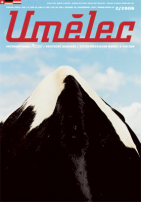














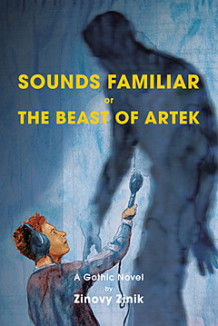






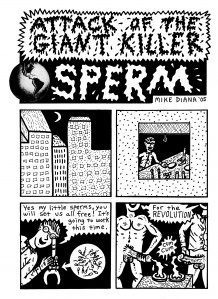




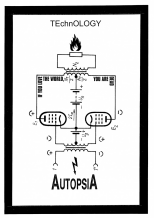
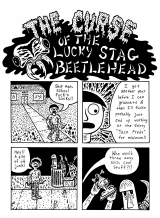
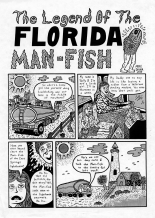
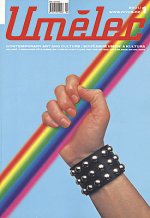


 New book by I.M.Jirous in English at our online bookshop.
New book by I.M.Jirous in English at our online bookshop.
Comentarios
Actualmente no hay comentariosAgregar nuevo comentario